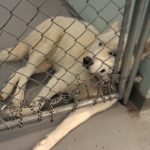Trimming Down Garfield: How Pets Have Become a Waste of Space
When we think of big, modern-day ethical dilemmas, many think about experimentation on animals or people, methods of generating energy, nuclear weapons and other bigger picture quandaries which we are reminded about on a regular basis. But if there is one dilemma that goes almost unspoken, it is the connection between humans and their best friend(s). Cats and dogs have been domesticated for thousands of years and many different breeds of either animal have served us diligently, from farming to security to assisting the handicapped. And while these breeds still serve their purpose, the gross portion of people own pets only for domestication or companionship. While this seems like a less dire subject pertaining to ethics, the impact pets make (in terms of economic impact and environmental impact) is far greater than their owners realize.
In terms of economic impact, owning a pet could be described as being taxed for having something that gives back nothing in terms of financial investment or security. Owning a cat can cost the average owner somewhere around $602 per year, and dogs (depending on breed) will cost approximately $1,056 per year according to a study conducted by the Australian Companion Animal council in 2010. There are also several factors that may impact these costs. For example, some breeds die or contract different phenotypical traits that result in later life health problems. German Shepherds have low set hips and backs, resulting in arthritis and difficulty moving later in life. Small dogs, such as Pomeranians and “teacup dogs” live short, agonizing lives due to their underdeveloped skeletons and overworked organs. These health problems ultimately add up to more medicine, more vet visits and ultimately a widening hole in the checkbook. $60.28 billion were spent on pet-related expenditures alone in the US in 2015 according to the Animal Pet Products Association (approximately one-tenth of the US defense budget). $23.05 billion of these expenditures were spent on pet food alone, along with $15.42 billion spent on vet care and $5.41 billion in grooming or boarding. Imagine what we could invest in as a country if $60 billion weren’t going to our custom creature comforts every year. This money spent on pets could be greatly reduced if the number of pets were to decline over time or if ownership was restricted to agricultural or security purposes.
There is also a significant impact of pets on the environment. Cats hunt small mammals and disrupt their nesting grounds, which has resulted in the extinction of several species of birds across North America. Dogs have a similar impact, chasing or hunting mammals outside of the house, disrupting migration patterns and introducing foreign pathogens to the environment. They also have a considerable draw on resources! There are approximately 70 to 80 million dogs and 74 to 96 million cats owned in the United States, which in turn must be fed, medicated, entertained and groomed. And think of the resources that go into these costs: Food. Water. Medicine. Even clothing. These animals are treated to human comforts with the least of responsibilities and no reward beyond emotional contentment. It should be our prerogative as environmentally conscious citizens to reduce the interference of domesticated animals in nature by ultimately curbing their influence via population control.
It should be noted again that these are domesticated animals, which live under human dependence and are bred to fit the personal appeal of man, and not selected by natural means. Although animals were domesticated and bred for certain functions of human life, many of these pets have become obsolete for these roles. Many are not exposed to the outdoors the way their ancestors were—and in turn—most of them cannot revert to these lifestyles. If man were to release all known dog breeds back into the wild, very few would be capable of living independently. This triggers a question that most wouldn’t dare to ask themselves: is the quality of life of pets greater than their natural counterparts, or by owning them, are we actually creating a detriment to their livelihood? If a dog does not have the free space to roam or prey to hunt, does it lead a full life? If a cat remains cooped up indoors, are its primal instincts worn away, and does it become complacent with its situation?





